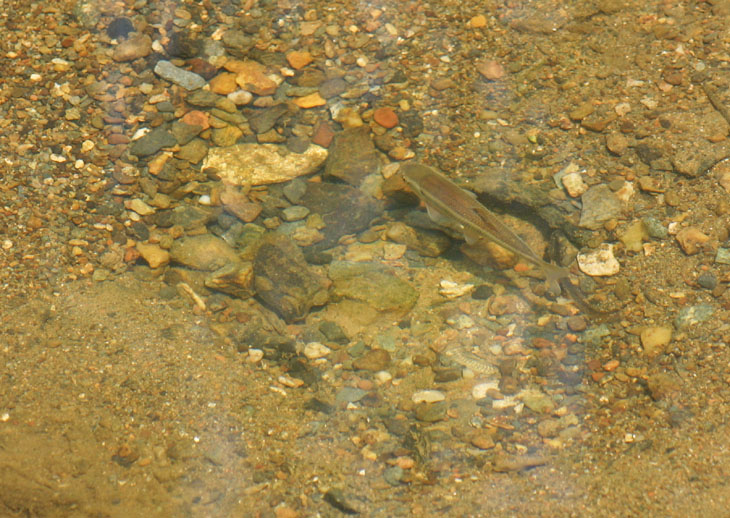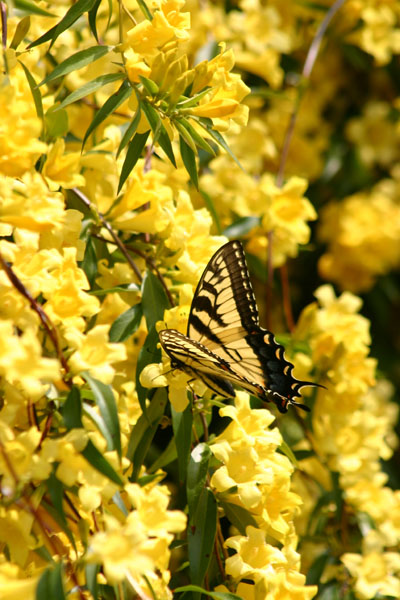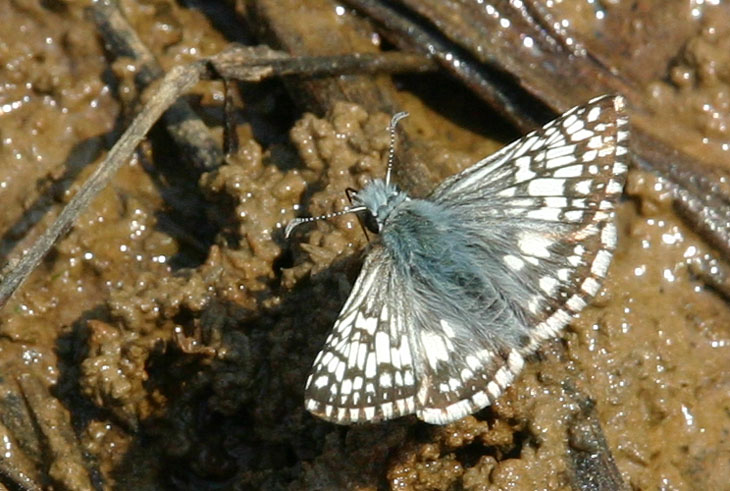I know you count on me for much deeper, more profound statements than the title, but as a nature photographer and just someone who likes playing in the mud, I go through a kind of withdrawal during the winter months, and so I’m quite happy to see the explosion of natural things to capture interest when spring rolls around. All of these, by the way, are extensions of the same day of shooting I posted about previously, really about two hour’s worth, all in a local park.

Above, the catchment basin for water drainage that featured the praying mantises and grasshopper had the typical vernal occupants, the tadpoles. My hand is in a shallow culvert where the edge of the drain pipe had formed a very narrow channel for outflow, and the current proved stronger than the tails of these little guys – they had been carried in by the flow, and were unable to get back out to the greater pond area. Since, as I type this, we have gone through three fierce rainstorms in the intervening time, the water level has no doubt risen remarkably, and thus the narrow flow channel is gone – they are likely able to rejoin the pond now.

Not far away ran the creek which, while shallow and narrow, features two beaver dams and its own collection of spring evidence. Here, my patience allowed this minnow to return to his (most likely it’s a male) spawning pit, a depression that fish clear by thrashing away silt, and sometimes by nudging debris with their snouts and carrying away gravel in their mouths. Since the upstream path from this had a distinctive gravel deposit, I consider this likely, but identifying minnows from this kind of angle is difficult at best. The pit serves as a collective area where the newborn fry are free from too much current, and the parents can keep track of them easily, able to protect them within the smaller space. This one was very much aware of my presence, so I was required to hold still for a few minutes, camera raised, until he posed by his construction.
 The lepidoptera are making their gradual return, as well. On the walk back, I spotted a heavily-bloomed vine that The Girlfriend told me is a Carolina Yellow Jasmine (Gelsemium sempervirens,) being visited by a female Eastern Tiger Swallowtail (Papilio glaucus.) The males of this species are very similar to the Black Swallowtail, being predominantly black – it’s lucky this matches the name, or it might have been confusing. The Blacks were the ones who raided our parsley patch one year. There is a benefit to either maintaining a varied garden or planters, or letting at least a portion of your yard go wild: it attracts so much more in the way of interesting insects and wildlife. If you’re active in nature photography, convincing them to come to you certainly helps.
The lepidoptera are making their gradual return, as well. On the walk back, I spotted a heavily-bloomed vine that The Girlfriend told me is a Carolina Yellow Jasmine (Gelsemium sempervirens,) being visited by a female Eastern Tiger Swallowtail (Papilio glaucus.) The males of this species are very similar to the Black Swallowtail, being predominantly black – it’s lucky this matches the name, or it might have been confusing. The Blacks were the ones who raided our parsley patch one year. There is a benefit to either maintaining a varied garden or planters, or letting at least a portion of your yard go wild: it attracts so much more in the way of interesting insects and wildlife. If you’re active in nature photography, convincing them to come to you certainly helps.
It’s very easy to say that the swallowtails are the most common butterflies in this area of North Carolina, but this is not likely to be true: the swallowtails are among the biggest and easiest to spot, very distinctive when around (and often mistakenly identified as the deep orange Monarchs,) but the smaller ones outnumber the larger species by a significant margin – we simply fail to notice them as much.
Below, a Common Checkered-Skipper (Pyrgus communis) pauses to grab some hydration at the edge of the catch basin. While everybody thinks of butterflies as drinking only from flowers, they need supplemental water and minerals too, and it’s not uncommon to see them feeding from other things, especially mudflats. They like salt, and I’ve convinced them to remain on my hand in butterfly houses by wiping the sweat from my forehead; I also have several photos of a cluster of butterflies that were quite happy over fresh raccoon feces. Seems unsavory, but one species’ trash is another’s treasure, and nature isn’t inclined to follow the preconceptions that we possess of pretty things.

At the same time, I have issues with descriptions such as, “red in tooth and claw,” simply because predation isn’t this evil or vicious thing that humans tend to make it out to be, either. Everything dies, everything suffers, at one point or another – that’s life. While it’s okay to have empathy and to want to avoid unnecessary suffering, for ourselves or any other species, this shouldn’t extend to making judgment calls on supposed “morality” or the appropriateness of natural interactions, most especially from a standpoint of how appealing, or unappealing, any participant is. I’ve had to remind people of this quite often, as they want to protect their birdfeeders from hawks, or birdhouses from snakes, or gardens from rabbits and deer. It’s all part of the system.
So now, let me take this opportunity to try an experiment. I’ve been thinking of soliciting readers’ own photos of local flora and fauna and putting up a special page, but I haven’t the faintest idea of whether there’s interest in this or not. That’s where you come in. If you’re interested in this, let me know in the comments. I’m only an amateur naturalist, but I’ll do my best to help identify species, behavior, and any other questions you might have as well. Should it prove popular enough, I’ll go ahead and set up a new gallery.
Thanks for your help!



















































